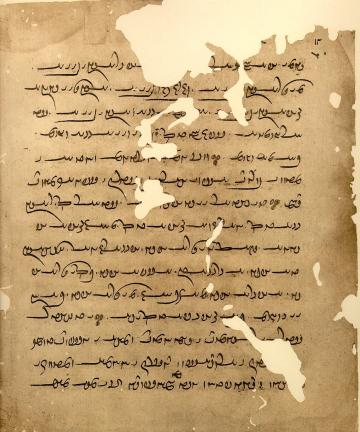Avestan & Zoroastrianism
In studying Farsi, especially in the context of Iran, religion & politics are nearly unavoidable due to Iran's history in the last 50 years. Iran, whose full name is the Islamic Republic of Iran, is not a secular country. The current legal system is heavily based on sharia (Islamic law). This includes, but is not limited to, mandating all women to adorn hijabs, despite their faith or background; a national prohibition on alcohol; and heavy censorship of media in efforts to only have pro-Islamic, 'modest' ideas. Islam's heavy influence on Iranian law and politics, at least in its modern form, is due to the 1979 Iranian Revolution. Now, I could write (and have) a 10-page paper discussing the intricacies of this revolution, so I will choose to focus on Zoroastrianism, the main religion in the region that would become modern-day Iran.
Zoroastrianism is debated to be one of the first monotheistic religions. It is more than three thousand years old (its origins date back even further), predating both Christianity and Islam by centuries. Its main ideas and beliefs can be seen throughout other major religions, such as Buddhism and Judaism (as well as Christianity and Islam). Zoroastrianism became the major religion of Persia, and remained so until the 7th century Arab Conquest, inducing a global Parsi -- the term for the Zoroastrian population -- diaspora. Zoroastrianism is deeply tied with ancient Iranian history, which can be seen throughout modern-day culture -- most notably, perhaps, in Nowruz, which is the widely celebrated Persian New Year.
The origins of Zoroastrianism are not widely known. This might be due to the fact that it was orally passed down among Zoroastrian priests for more than a thousand years. Likely the first time the Avesta was written was in the Sasanian period. A special alphabet was devised to do so, forming the language/script Avestan, the language the Avesta is written in. The Avesta is the earliest (sacred) main text we refer to for knowledge about Zoroastrianism.
Below is a digitized page from the Avesta (see here for more pages).
"Avestan," University of Oxford
The Iranian languages are a branch of the Indo-Iranian languages, and the Indo-Iranian languages are a branch of the Indo-European languages. The Iranian languages are generally split up into three stages: Old Iranian, Middle Iranian, and New Iranian. Persian would be classified as a New Iranian language (alongside others like Pashto and Kurdish) -- just a note, I am specifically studying Farsi, which is a dialect of Persian, specific to Iran.
Avestan, rather Old Avestan, would classify as an Old Iranian language, alongside Old Persian. Avestan is more specific to the Avesta and Zoroastrianism, while Old Persian was more widely used across the Sasanian Empire (an ancient Persian empire).
References
Crary, David. "Ancient but small in number, Zoroastrians confront depletion of their faith," PBS News Hour, 1 July 2022. https://www.pbs.org/newshour/arts/ancient-but-small-in-number-zoroastrians-confront-depletion-of-their-faith#:~:text=Beliefs,words%20and%20do%20good%20deeds.
Malandra, William W. "Zoroastrianism i. Historical Review Up to the Arab Conquest," ENCYCLOPÆDIA IRANICA FOUNDATION. 20 July 2005. https://iranicaonline.org/articles/zoroastrianism-i-historical-review


Comments